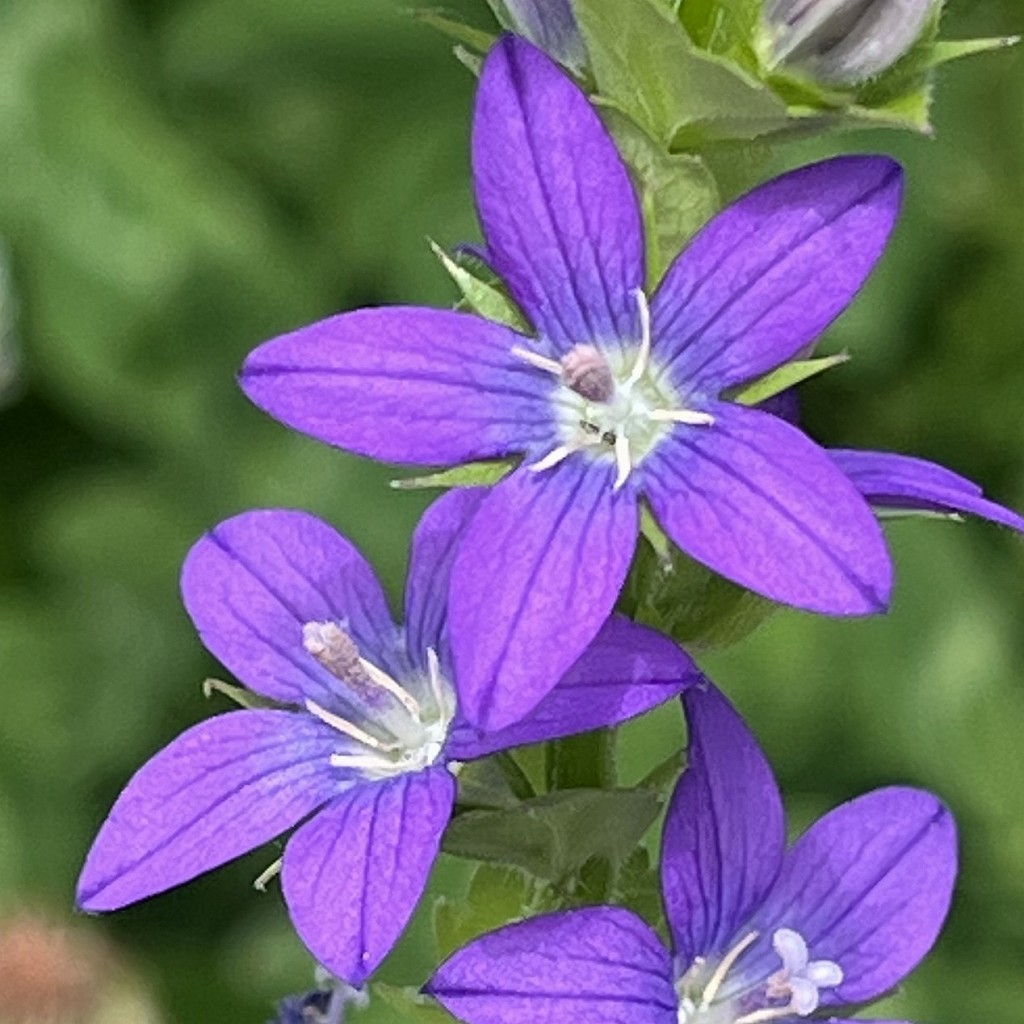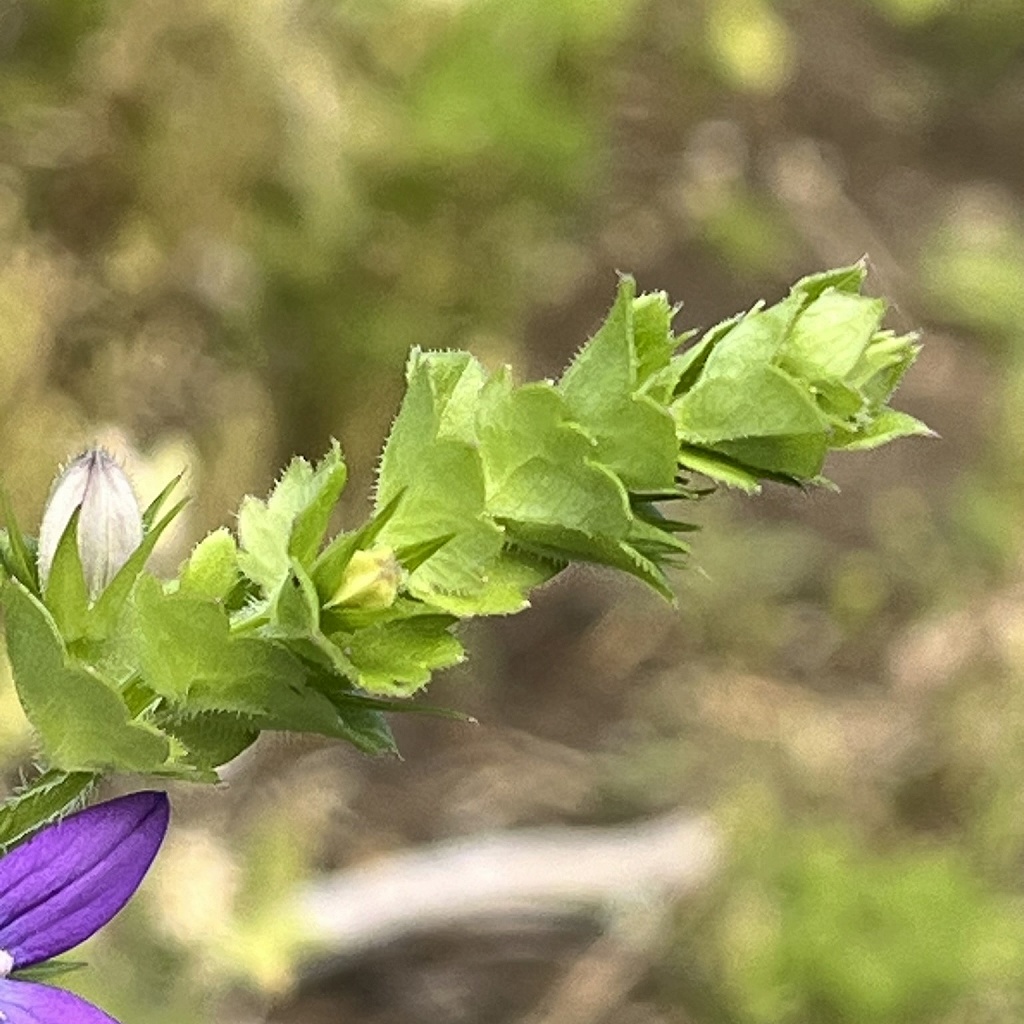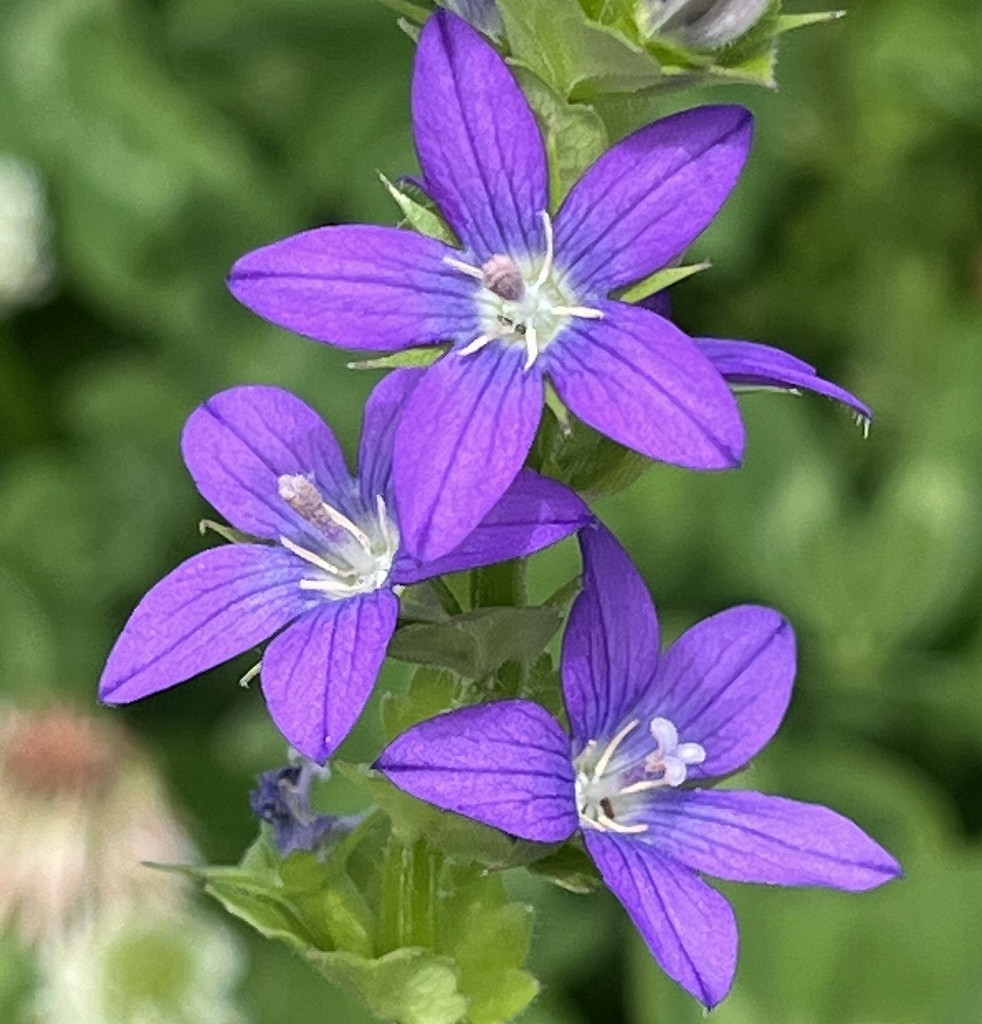キキョウソウの英名は「ヴィーナスの姿見」。花後に筒状の蒴果が熟すと、まるで鏡掛が捲り上がって中が覗けるよう、側面に穴が空きます。
The name Common Venus’ looking-glass comes from the fact that when the tubular capsule ripens after flowering, a hole appears on the side, as if a cloth to cover the mirror had rolled up to allow the inside to be seen.
【仮名】キキョウソウ, ダンダンキキョウ
【和名】桔梗草, 段々桔梗
【英名】Common Venus’ looking-glass
【学名】Triodanis perfoliata
【誕生】06/ 22
【開花】05, 06, 07月
【花色】Violet
キキョウソウ
キキョウソウの概要

キキョウソウはキキョウ科の1年草です。原産地の北米から世界中に広がって野生化。日本では福島県以南に分布し、野原などで群生します。英名は「ヴィーナスの姿見」という意味。花後に筒状の蒴果が熟すと、まるで鏡掛が捲り上がって中が覗けるよう、側面に穴が空くからです。
キキョウソウの名前

キキョウソウの和名の由来は花が「桔梗」に似ているから。別名の「段々桔梗」は、葉が段々に茎を抱き、花が段々に咲き上がるからです。ラテン語の属名トリオダニスは「3つの歯のような」という意味で蒴果を、種小名ペルフォリアタは「葉を貫くような」という意味で茎を形容。
キキョウソウの姿形

キキョウソウの茎は直立し、少し角張って下向きの毛が生えます。葉は茎を抱えて互生し、縁に粗い鋸歯が入る楕円形。花は雄性先熟の開放花が深く5裂し、雄しべが5本、雌しべが3裂です。その下に自家受粉の閉鎖花たち。花後の蒴果は側面の穴から小さな種子がこぼれ落ちます。
キキョウソウの近縁

キキョウソウの近縁種「雛桔梗草」は、桔梗草に姿形が似ているものの、開花が早く、草丈が低く、葉が茎を抱えず、花が茎の下の方では咲きません。「雛桔梗」は姿形や名前が似ているものの、遠縁のヒナギキョウ属。日本の在来種で、閉鎖花を着けず、蒴果が熟すと縦に裂けます。
Common Venus’ looking-glass

Common Venus’ looking-glass is an annual plant of the Campanulaceae family. It has spread from its native North America to the world and become naturalized. In Japan, it is distributed south of Fukushima Prefecture and grows in clusters in fields. The name Common Venus’ looking-glass comes from the fact that when the tubular capsule ripens after flowering, a hole appears on the side, as if a cloth to cover the mirror had rolled up to allow the inside to be seen.
The Japanese name for Common Venus’ looking-glass means “bellflower grass” because the flowers resemble bellflowers. It is also known as “tiered bellflower” because the leaves wrap around the stem in tiers and the flowers bloom in tiers. The Latin genus name Triodanis means “like three teeth”. This describes the capsule. The specific name perfoliata means “penetrating leaves”. This describes the stem.
The stem of Common Venus’ looking-glass is erect, slightly angular, and hairy downwards. The leaves are alternate, clasping the stem, and elliptical with coarse sawtooth edges. The flowers are protoandrogenous, with open deeply 5-lobed flowers, 5 stamens, and 3-lobed pistils. Below them are closed flowers that are self-pollinating. After flowering, small seeds spill out of the capsule through holes on the sides.
A close relative of Common Venus’ looking-glass, “Triodanis biflora”, has a similar appearance, but blooms early, is short, has leaves that do not clasp the stem, and does not bloom low on the stem. “Wahlenbergia marginata” is a distant relative, although it has a similar appearance and name. A native Japanese species, it does not produce cleistogamous flowers and the capsules split vertically when ripe.


